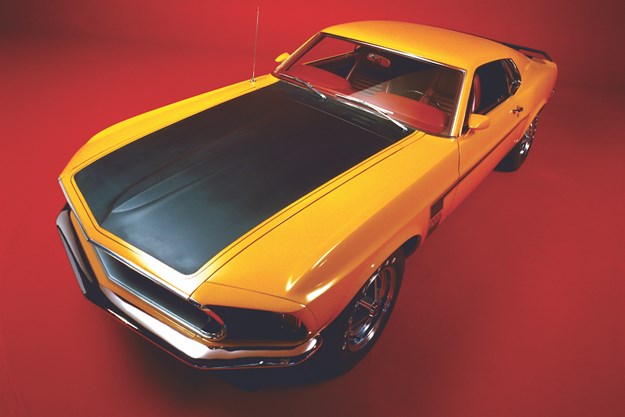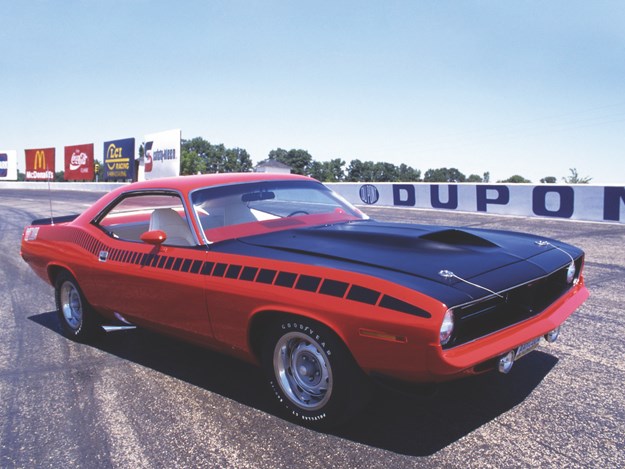Pick of the pony cars - Market Watch
America embraced the Mustang in a way not seen since Henry Ford put the world on wheels with his Model T.
It all started in April 1964 when Ford displayed a new compact coupe that it hoped would compensate for sad sales of the conservative Falcon. Knocked over in the rush was never a more appropriate phrase.
Within five months, 135,000 of Lee Iacocca’s ‘secretary’s car’ had been sold and 93,000 of them were V8s. A year later there were 553,000 more Mustangs on global roads and a new word had entered the language – Ponycar.
Other USA manufacturers were moving mountains in order to share in the bounty, but the Mustang had come first and it got to set the agenda for models characterised by a long bonnet, (hood and short-boot deck) design, on a short wheelbase with minimal room for rear-seat passengers or luggage.
Up front was plenty of space for the biggest engines from various manufacturers and under the tail went all kinds of devices, designed to give Ponys some traction. They had to be cheap too.
In late 1966 when Chevrolet displayed its Mustang hunting Camaro, a basic six-cylinder coupe cost $2466 with a 327 cubic inch V8 only $92.77 extra.
Others followed including Ford’s Mercury Division with its Cougar and Pontiac’s Firebird. American Motors even had a go with the Javelin and shorter wheelbase AMX. They finally were followed for 1970 by Dodge’s appropriately badged Challenger and the shorter, cheaper Plymouth ’Cuda.
Which Ponycar will work best for different people is difficult to judge. All are similar in size and concept, with rudimentary suspension and not much attention paid to brakes or safety measures. However, with such a variety of body shapes, engine options and equipment, they fill quite different gaps in a volatile market.
FORD MUSTANG BOSS 302

Australians who followed motorsport in the early 1970s would tell you that the only Mustang worth having was a red one, with ‘Coca-Cola’ stencilled down the sides and a fixated Canadian at the wheel.
Allan Moffat’s Mustang Boss 302 was for certain an extraordinary car, being one of seven made, and likely prompted people who saw it to go looking for any kind of Mustang there was in the used market.
The Boss 302 used a 4.9-litre engine and was eligible for US Trans Am racing. They were similar in some respects to the 302 used here by XT GT Falcons, but Boss versions with 38 per cent more power took no prisoners.
The small-block engine ran a 780cfm Holley carburettor, feeding cylinders that ran at 10.5:1 compression and produced 290bhp (215kW). Four-speed manual was the only transmission and disc front brakes were included.
Boss 302s were never common in Australia as new cars, ensuring most we see kept their original left-hand drive configuration. Despite scarcity, the Boss isn’t expensive; most in our market are $100,000 cheaper than an XY GT Falcon.
CHEV CAMARORS/SS396

Camaros with the big-block 6.5-litre ‘396’ engine do stretch the bounds of Ponycar equivalence, but not to the same degree as a 440 cubic inch ’Cuda or Ford’s own Boss 429.
The 6.5-litre V8 was stock fodder in the Chevelle and full-sized Impala, producing 245kW and ensuring the 1520kg Camaro SS with a four-speed ran the standing quarter mile (400 metres) in 14.5 seconds.
RS/SS Camaros with the 396 engine are rare cars. Out of the 34,411 Super Sports Camaros built for 1967, fewer than 10 per cent had the big-block engine. Fewer still would come with the RS dress-up package of concealed headlamps, upgraded interior and fake air intakes.
A big help to handling were uprated chassis components intended to modulate body roll and overcome problems experienced by cars with single-leaf rear suspension.
SS trim and the 396 cubic inch engine were available in the Camaro coupe or convertible, with one such soft-top serving as Pace Car for the 1967 Indianapolis 500. Don’t waste time looking for street-spec examples though, because only 104 replicas were made. Quality coupes aren’t cheap anymore, with an excellent car scheduled for sale during March 2024 at an estimated US$140-180,000.
PLYMOUTH AAR ‘CUDA 340

Being last to join the Ponycar party should have given Mopar’s Challenger and ’Cuda an advantage over older designs. No such luck, as the designers of both models stuck with heavy front-end weight bias, a live rear axle and Chrysler’s signature torsion-bar suspension.
Engines of up to 7.4 litres made these the most powerful mainstream Ponycars, but not necessarily the fastest or most rewarding for drivers.
The 5.5-litre AAR (All American Racers) version appeared after other ’Cuda models and was in production for just five weeks. It was lighter and better balanced than the big-block cars and delivered similar performance. Basic engines exactly matched the Boss 302 Mustang’s 290bhp output and ’Cudas with four-speed manual transmission would see 6.7 seconds for the 0-60mph (0-97km/h) sprint and a quarter mile (400m) in 14.8.
With 2724 cars built, AAR ’Cudas are difficult to source in the US and almost impossible here. Still not ridiculously expensive though.
A record price of US$280,000 was paid during 2023 for an exceptional and completely original car, but others in decent order sell for US$110-130,000.
MERCURY COUGAR XR7

Mercury’s elegant Cougar with its downsized Thunderbird looks barely qualified as a Ponycar, but from 1967 it filled a market gap that Ford wouldn’t plug until 1969 when adding a Grande version to the Mustang range.
Six-cylinders weren’t an option in the Cougar. The smallest motor was a Mustang-sized 4.7-litre V8, with a four-barrel 4.7 or big-block 390 V8 optional. Three-speed manual transmission was standard, with four-speed manual listed as the stock XR7 transmission. However, virtually every one of the 27,221 XR7s built during 1967 would have been automatic. Basic Cougars carried a $2781 price tag, with the XR7 costing $230 more.
The Cougar wheelbase was 76mm longer than the Mustang’s and hidden headlights were its most prestigious feature, along with a more ostentatious dash layout and separate front seats.
XR7s are the version most likely found in Australia, and with the 390 engine rather than a basic 289. Although bigger and better equipped than a Mustang, Cougars tend to be 30-50 per cent cheaper, which means saving $30-50,000 if you choose an XR7 over a 390-engined Mustang GT.
AMERICAN MOTORS AMX

AMC’s Javelin coupe was the more direct Mustang rival, but when looking at rivals to our chosen Boss 302 representative, an AMX is the better fit.
Even in the USA, the AMX isn’t common but nor is it particularly expensive. The cars were built from 1968-70, with total production of 19,134. Of those, around half (10,202) had the 390 cubic inch V8, but even cars with the 4.7-litre 290 V8 would top 200km/h.
Painted patriotically in red, white and blue, a modified AMX driven by Land Speed Record holder Craig Breedlove set a 189mph (304km/h) two-way record on the Bonneville Salt Flats, with a one-way top speed of 200mph (322km/h).
Australia saw just 24 AMXs from the 1969 build. Those cars, as did our stocks of the longer and more conservative Javelin SST, arrived in CKD crates at Australian Motor Industries’ Melbourne assembly plant and sold quickly through AMI dealerships.
Other cars over the years may have arrived LHD from the USA, where good-quality AMX 390s remain easy to locate and typically cost US$45-60,000.
Unique Cars magazine Value Guides
Sell your car for free right here
Get your monthly fix of news, reviews and stories on the greatest cars and minds in the automotive world.
Subscribe

.jpg)












.jpg)



